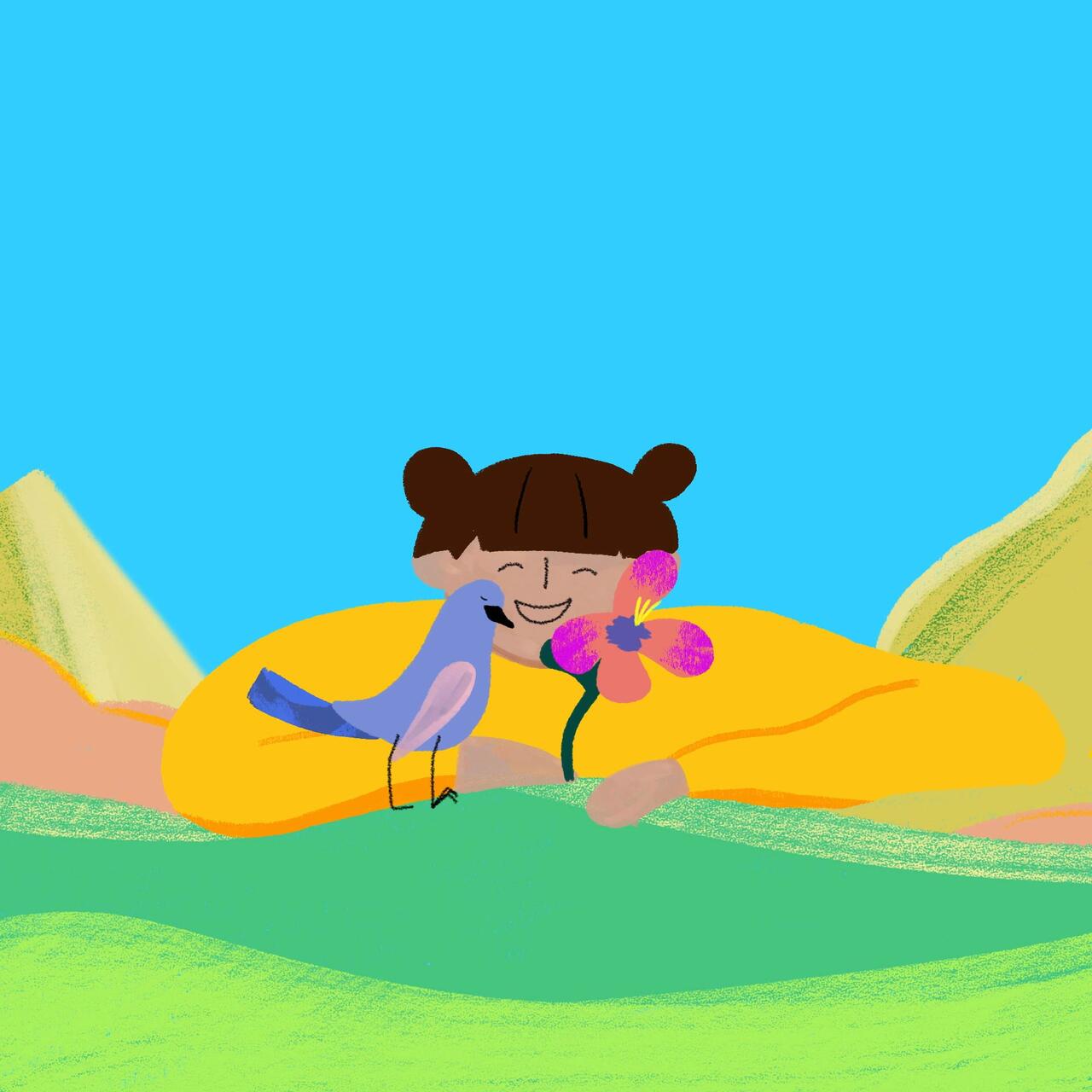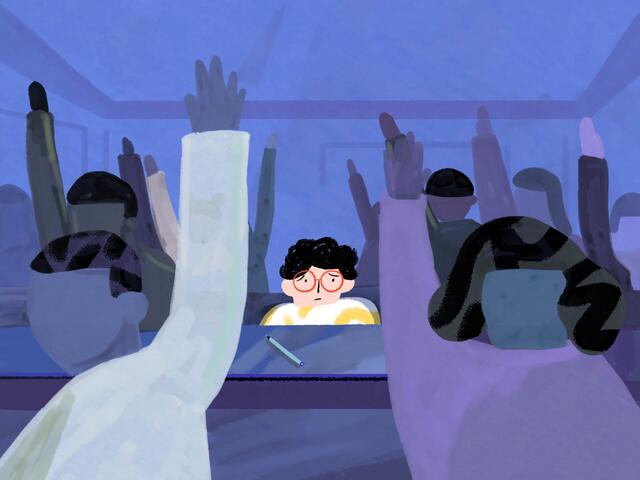
Top tips for teachers: How to support refugees in the classroom
The IRC’s Healing Classrooms programme trains teachers and support staff across England on how to offer refugee and asylum-seeking children a safe place to learn.

The IRC’s Healing Classrooms programme trains teachers and support staff across England on how to offer refugee and asylum-seeking children a safe place to learn.
Starting a new school can be daunting for any child but especially for refugee children. The IRC's Healing Classrooms programme offers free training and resources support teachers who work with refugees and asylum seekers. We spoke to one teacher, Hollie, about her experience of the programme and asked her to provide some tips for welcoming and supporting refugee students.
Hollie is a past participant of the Healing Classrooms training series. She works as a PPA (planning, preparation and assessment time) cover teacher and intervention teacher. She supports refugee students by utilising the Nuffield Early Language Intervention Project’s evidence-based approaches to improve children’s oral language skills in Reception and Year One. Find more information about this approach here.
“I led a presentation on Healing Classrooms and received very positive feedback… it’s made staff think about their practice and given them reassurance that we’re doing the right things”.
Children who are learning English, especially those who are learning the Latin alphabet for the first time, need fonts that look closest to handwriting. Consider changing the fonts of newsletters for parents who are new to English or use translations for those with no English literacy. Comic Sans is a good example.
A students lack of English is not an indicator of academic ability. Students who are placed around high ability learners will hear a higher standard of English spoken in lessons and be able to gain peer support. Behaviour is often better in these settings too so new students can see good behaviour models.
“We have a child who is incredible at Maths. You just need to make sure he’s with the right people of similar ability. I never actually thought about it before but we would automatically put children in a lower ability group with SEN children because they’re EAL but learning the vocabulary and language improves so much in higher groups”.
Buddies who are well trained using the IRC’s free buddy resources can provide a friendly face and helping hand to new refugee students who are learning a new language, adapting to a new culture and a new school all at once. Buddies can help newcomers to feel less overwhelmed and more welcome in their new school.

Planning activities where students learn in small groups, playing games, completing challenges or other tasks can help English learners to flourish in a less intimidating setting. It prevents children from missing out on learning when they first arrive as they can watch how their team mates complete tasks, participate in little ways at first and gain vital peer support. Group work can also help children to make friends quickly and practice speaking English.
“I reminded staff to be wary that when they do group work, they should choose children carefully and group children with others who will support them. It’s also a good chance to make friends”.
Planning where students sit and who they sit with can give English learners and children with potential trauma opportunities to gain support from their peers, build new friendships and support networks and show off their skills and intelligence while knowing there is a friendly face to help out if they get stuck.
“[One student] is now using four-word sentences instead of just one word and sitting with other children and being around his peers has helped so much with his language learning”.
Hollie explained how Healing Classrooms helped her to consider how the school bell or fire alarms could be triggering to children who have fled conflicts and wars and took on board the advice to be transparent with children and explain to them when these loud noises will happen and that they are completely safe when they happen. She was pleasantly surprised that luckily none of the children were scared by these sounds and stated: “Children are so resilient – it’s incredible!”

Hollie explained how her school felt as prepared as they could be for the new refugee students but that they needed to meet the children and get to know them as individuals before they could provide the tailored support they would need. To ensure students can understand her lessons, she makes sure to use a range of videos, images and modelling to accompany the lesson so if a student doesn’t understand the video, they can see the activity modelled and learn in their own way.
“We didn’t know the specific emotional and linguistic needs… all of our children experienced sudden evacuations [from their home countries] and we knew we needed to have pastoral staff in school ready to work with them”.
Hollie’s school works closely with parents:“[parents] can come and see us on the gate if there are any problems and ask us any questions”. Her school also provides translated letters and updates so parents can “get the gist of what’s going on”. Other ways to make parents feel less isolated when they arrive in your local community are coffee mornings with local parents, parent buddies, basic English classes in school, conversation clubs with local volunteers, signposting families to local charities and services, family fun days and ensuring parents understand invites to key events and have plenty of time to prepare for them. Use the IRC’s Initial Meet-Up with Caregivers guidelines to welcome families to your school.
Not all refugees will be impacted by trauma but many will. Hollie utilises mindfulness activities to help the children improve their social emotional skills and resilience within school. “We use mindfulness for example going on a nature walk, using music to dance and yoga in the afternoon”. Mindfulness and grounding activities can help children to recover from toxic stress and other impacts of trauma.
Hollie explains that “everything we have tried from Healing Classrooms is used school-wide”… “Healing Classrooms is good Continued Professional Development training and a chance to broaden our skills.”
“I would like to do some more courses with the IRC and the head is very keen for us to share learnings in staff meetings with everyone else.”
To sign up for free Healing Classrooms sessions with educators from across the UK, visit our online training page.
To sign up for free bespoke sessions for your whole school or academy chain, email: healingclassrooms.uk@rescue.org.
If you are an out-of-school organisation or activity provider, sign up for our free Healing Spaces sessions. Click here for more information.